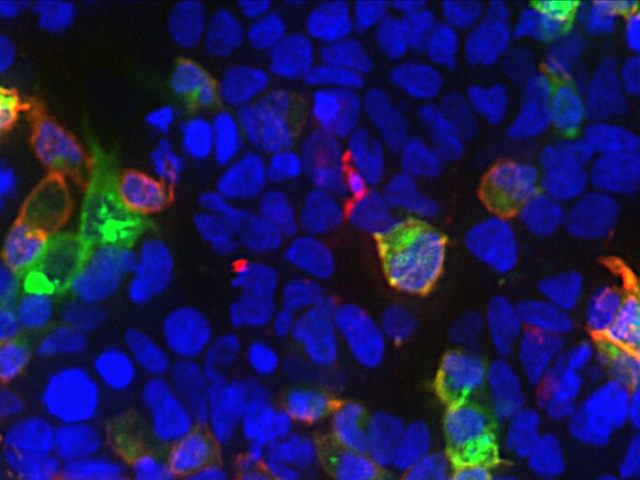| Outline |
|---|
|
Our department comprises from the following three groups.
Utilizing the characteristics of each department, we aim to acquire abundant knowledge throughout internal medicine, obtain specialist qualifications, and nurture doctors with "research mind".
The research theme of each department is shown below. (1) Department of Immunology and Rheumatology 1. Early diagnosis and early treatment of rheumatoid arthritis: Try to identify what imaging features (focusing on MRI & ultrasound, i.e., bone marrow edema, bone erosion, synovitis, tenosynovitis ) / serologic markers are indispensable for early diagnosis as well as prognostification of rheumatoid arthritis including those treated by each class of biologic DMARDs/Jakinib. 2. Synovial cell differentiation and tissue regeneration: Try to identify the key regulatory molecules in inflammatory cells including synovial cells, osteoblasts and osteoclasts. 3. Involvement of apoptosis and HTLV-I infection in Sjogren's syndrome: Try to identify the role of HTLV-I in Sjogren's syndrome examined by in vitro and in vivo. 4. New classification of dermatomyositis/polymyositis using biomarkers: Try to identify the characteristic of dermatomyositis/polymyositis, especially those complicated with interstitial lung disease, examined by in vitro and in vivo, i.e., chest CT imaging pattern, serum autoantibodies and inflammatory mediators. 5. Pathological aspect of SLE: Try to identify the clinical as well as immunological characteristic of SLE examined by in vitro and in vivo, including the nation-wide clinical survey. 6. Autoinflammatory disease: clinical picture, genetical analysis: Try to identify the clinical as well as inflmmatory mediators characteristic of autoinflammatory disease, i.e., familial Mediterranean fever and adult-onset Still's disease examined by in vitro and in vivo, including the nation-wide clinical/genetical survey. (2) Department of Endocrinology and Metabolism 7. Genetic analysis of type 1 diabetes mellitus induced by immune checkpoint inhibitor; nivolumab: Try to determine the irAE-related genes induced by immune checkpoint inhibitor; nivolumab by whole genome analysis. 8. Immunologic analysis of type 1 diabetes: Try to clarify which immune cell types are responsible for the pathogenesis of autoimmunity by gene-targetted NOD mouse which is animal model of type 1 diabetes. 9. Evaluation of glucagone response in the patients with diabetes: Try to evaluate whether the glucagon response to a mixed meal tolerance test (MMTT) effects on the glucose intolerance in the patients with GDM, T1D, T2D. 10. Metabolic syndrome in young adulthood: Try to determine the prevalence of MetS and to verify whether intra-abdominal fat accumulation is associated with other MetS related metabolic parameters in the Japanese population in their 20s. 11. SGLT2 inhibitor and bone microarchitecture in elderly patients with type 2 diabetes: Try to evaluate whether treatment of SGLT2 inhibitor affects on bone metabolism by assessing the change of bone microstructure using the second-generation HR-pQCT in elderly patients with T2DM. (3) Department of Neurology and Strokology 12. Clinical practice and research in stroke and myasthenia gravis. |
| Further information |
|---|
|
http://www.med.nagasaki-u.ac.jp/intmed-1/index.html
|



